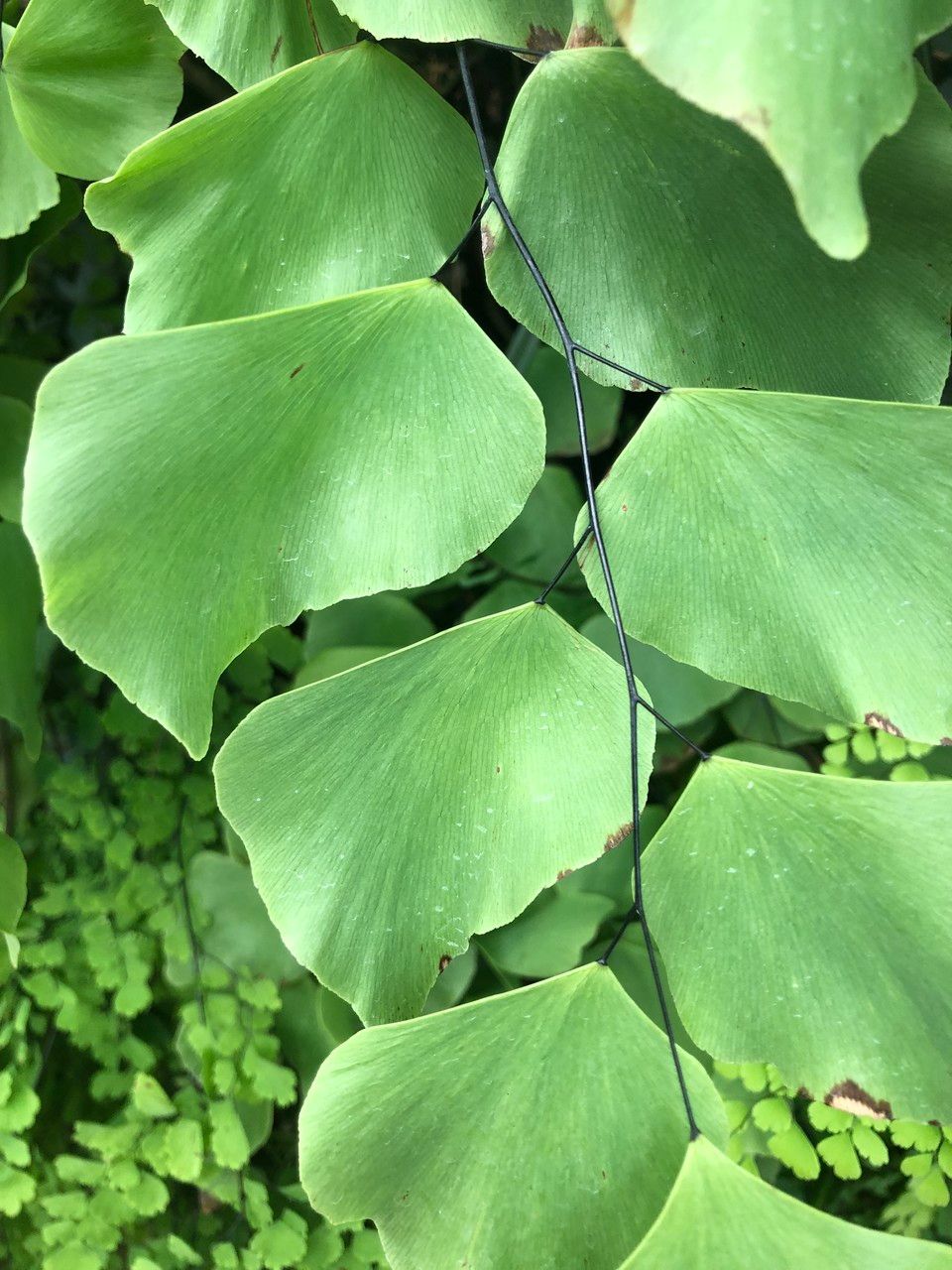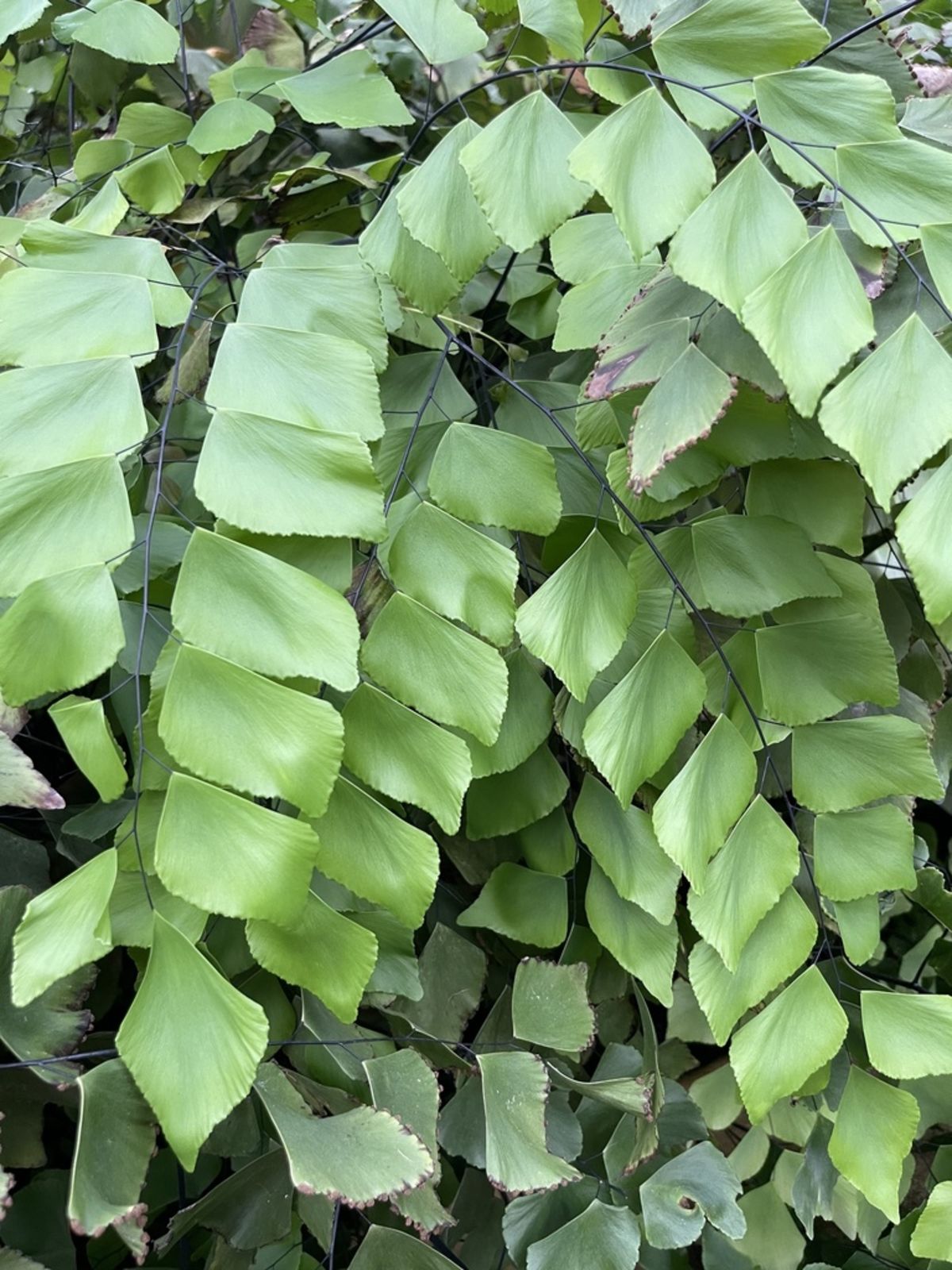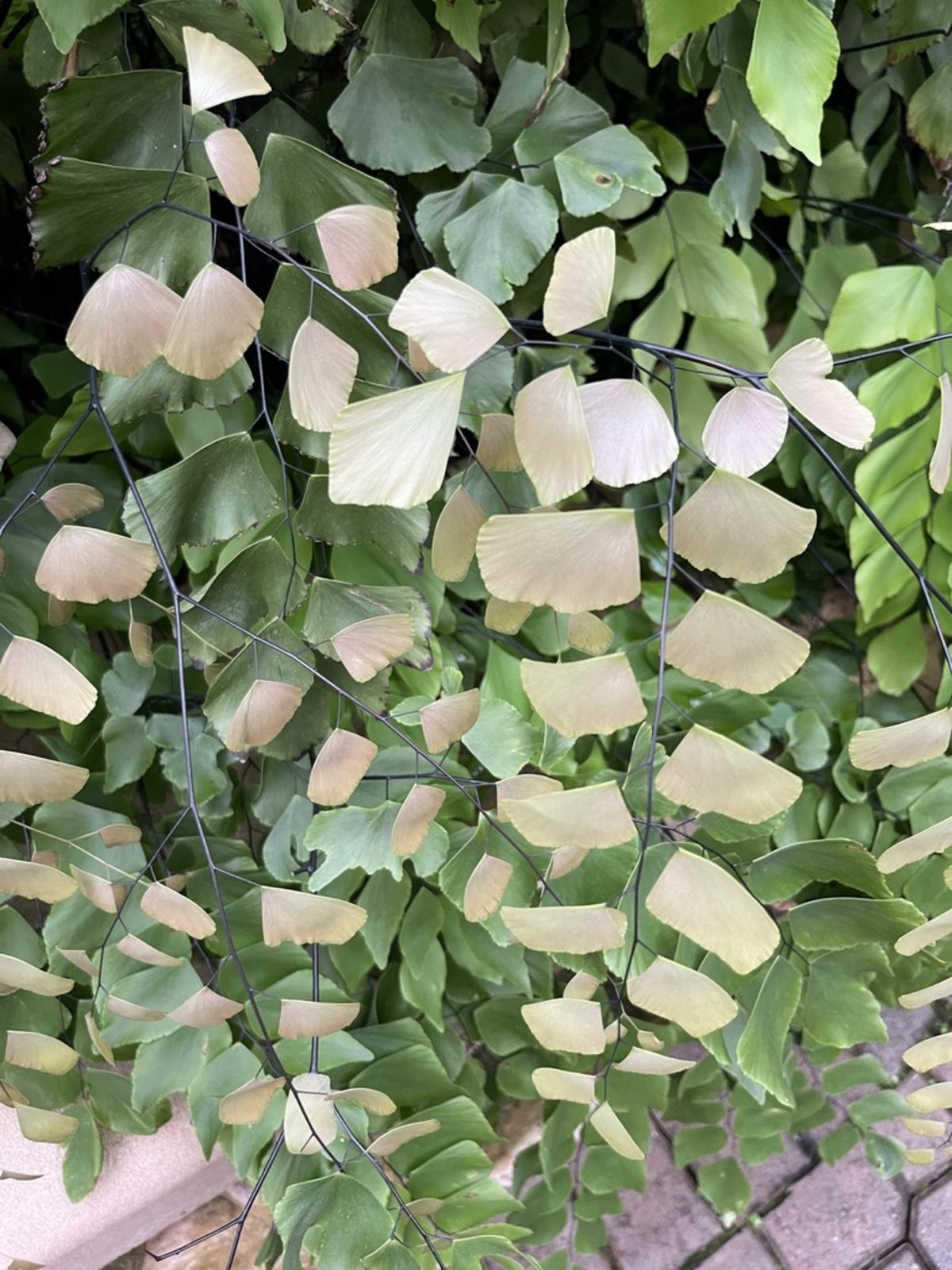Peruvian Maidenhair Fern
adiantum peruvianum
Also known as: ["Peruvian Maidenhair","Peruvian Finger Fern"]
Overview
A delicate, evergreen fern native to the high Andes of Peru, characterized by its fine, lacy fronds and finger-like leaflets.
Benefits & Perks
["aesthetic foliage","shade tolerant","rare/collector’s item"]
Botanical Classification
| Phylum: | Tracheophyta |
| Class: | Polypodiopsida |
| Order: | Pteridophytales |
| Family: | Pteridaceae |
| Genus: | Adiantum |
| Botanical Name: | Adiantum peruvianum |
Plant Characteristics
Basic Information
- Category: Leaf Plants
- Suitable Location: indoor pot in a humid bathroom or kitchen, or shaded outdoor garden
- Suitable For:
- Is Weed: No
- Allergenicity: low
Environmental Needs
- Climate: {"temperatureRange":"10–25°C"}
- Hardiness: {"zones":"9–11"}
- Misting: every 2–3 days to maintain moderate humidity
- Drainage: Fast-draining to prevent waterlogging.
- Soil Type: Well-draining, rich, slightly acidic soil; mix of peat, perlite, and orchid bark works well.
Maintenance Level
- Maintenance Level: moderate
- Toughness Level: moderate
- Pruning Frequency: As needed, typically every few months or when fronds decline.
- Pruning Intensity: Light to moderate; focus on selective removal rather than heavy cutting.
Care Details
Ideal Sunlight Coverage:
Bright indirect light for 6–8 hours daily; avoid direct sunlight which can scorch the delicate fronds.
Sunlight Tolerance Tips:
Acclimate gradually to brighter light if moving from low light; place in a north or east-facing window indoors; use sheer curtains to filter intense light outdoors.
Care Requirements
Care Difficulty
moderatemoderate
Sunlight
partial shade to filtered light
Rotate plant weekly for even growth; avoid south-facing windows in summer; provide dappled light if outdoors.
Watering
every 7–10 days, allowing soil to dry slightly between waterings
Maintain consistent moisture without saturation; avoid letting the soil dry out completely; use room temperature water.
Soil
well-draining, peat-based potting mix
pH: 5.5–6.5 (slightly acidic).
Ensure pots have drainage holes; avoid heavy clay soils; top-dress with organic matter annually.
Temperature
Prefers 60–75°F (15–24°C); tolerates mild fluctuations but dislikes drafts or extreme heat.
Keep away from air vents; maintain stable temperatures; adjust watering with seasonal changes.
Fertilizing
every 4–6 weeks during growing season (spring and summer)
Apply fertilizer after watering to prevent root burn; flush soil occasionally to prevent salt buildup; stop fertilizing if growth slows.
Propagation
Methods
Division of rhizomes or spores; division is more reliable for home growers.
Step-by-Step Propagation Guide
- Divide rhizomes with sharp, sterile tools.
- Plant divisions at the same depth.
- Water lightly and maintain humidity.
Best Time: Spring or early summer when the plant is actively growing.
Environment
High humidity (70–90%), warm temperatures (65–75°F), indirect light.
Medium
Peat-based mix with perlite for division; sterile potting mix for spores.
Hormone
Not necessary for division; optional for spores to encourage germination.
Timeline
Division: immediate establishment; spores: 6–12 months to germinate and grow.
Tools Needed
Sharp knife, sterile potting mix, plastic bags or propagation dome, misting bottle.
Quick Tips
Ensure each division has roots and fronds; keep soil consistently moist but not waterlogged; provide bottom heat if possible.
Pruning & Repotting
Pruning Guide
Method
Snip individual fronds at the base with clean, sharp scissors; avoid cutting into the rhizome.
Pruning Plan
Remove dead or damaged fronds to maintain appearance and health; occasional shaping to control size.
Tools
Sharp scissors, pruning shears, sterilizing solution.
Checklist
Sterilize tools; prune dead/damaged fronds; avoid over-pruning; clean up debris.
Repotting Guide
Best Season
Spring, before the active growing season begins.
Pot Size
One size larger pot (e.g., 2–3 cm increase in diameter); ensure good drainage holes.
Method
Gently remove plant; trim any dead roots; place in a slightly larger pot with fresh, well-draining soil; water lightly after repotting.
Suggestions
Repot every 2–3 years or when roots fill the pot; beneficial for rejuvenation and fresh soil.
Checklist
Choose appropriate pot size; prepare fresh soil mix; handle roots gently; water after repotting.
Advanced Care Tips
Watering Mastery
Watering Checklist
Check soil moisture daily; water thoroughly but infrequently; ensure proper drainage; avoid wetting foliage.
How to Apply Water Properly
Water until it drains from the bottom, ensuring even saturation of the root zone; avoid wetting the fronds to prevent fungal issues; water in the morning to allow foliage to dry.
Watering Schedule Tips
Water thoroughly when the top inch of soil feels dry; reduce frequency in winter to prevent root rot.
Soil Improvement
Add perlite or coarse sand for drainage; incorporate peat moss for acidity and water retention; use orchid bark for aeration.
Temperature Stress Management
Signs of Temperature Issues
Yellowing or browning of fronds; stunted growth; wilting despite adequate water.
Cold Stress
Slows growth and can cause fronds to turn black or brittle; may lead to root damage if soil freezes.
Solution: Move to a warmer location away from drafts; insulate pots in cold climates; avoid overwatering in cool conditions.
Hot Stress
Fronds may wilt, brown, or curl; increased water loss can lead to dehydration.
Solution: Increase humidity with misting or a pebble tray; provide shade during peak heat; water more frequently but avoid waterlogging.
Fertilizing Guide
Fertilizing Checklist
Use diluted fertilizer; fertilize during active growth; avoid winter months; flush soil periodically.
Fertilizing Method
Use a balanced liquid fertilizer diluted to half strength every 4–6 weeks during growing season (spring/summer); avoid fertilizing in fall/winter.
Common Problems & Solutions
Toxicity Warning
Cats
Non-toxicAdiantum peruvianum is not toxic to cats. The plant does not pose a significant risk to feline health.
⚡ Toxic If:
if eaten
Dogs
Non-toxicAdiantum peruvianum is not toxic to dogs. The plant does not contain known compounds that are harmful to canines.
⚡ Toxic If:
if eaten
Humans
Non-toxicAdiantum peruvianum, commonly known as Peruvian Maidenhair Fern, is not considered toxic to humans. It is generally safe for ingestion in small quantities, though excessive consumption is not recommended.
⚡ Toxic If:
if eaten
Frequently Asked Questions
Q: How often should I water Adiantum peruvianum?
A: Water when the top inch of soil feels dry, ensuring the pot has good drainage to prevent root rot.
Q: Does this fern require high humidity?
A: Yes, it thrives in high humidity environments, so misting or a humidifier is recommended.
Q: Can Adiantum peruvianum be grown outdoors?
A: It is best suited for indoor cultivation in temperate climates, but can be grown outdoors in shaded, humid, frost-free areas.
Quick Reference
| Family: | Pteridaceae |
| Care: | moderate |
| Light: | partial shade to filtered ligh |
| Water: | every 7–10 days, allowing so |
Get Expert Care Tips
Download the Plantious app for personalized care reminders and plant identification!
Google Play App Store







